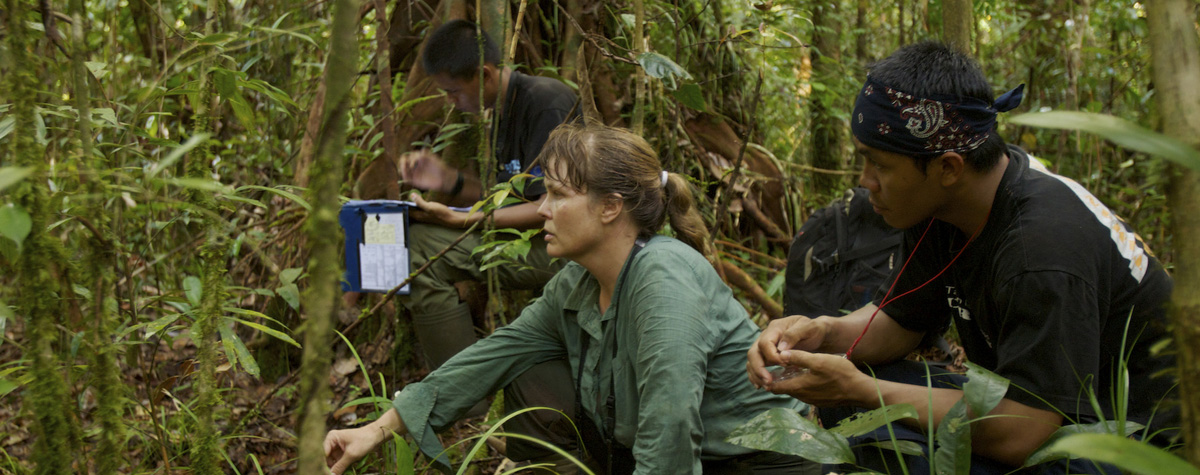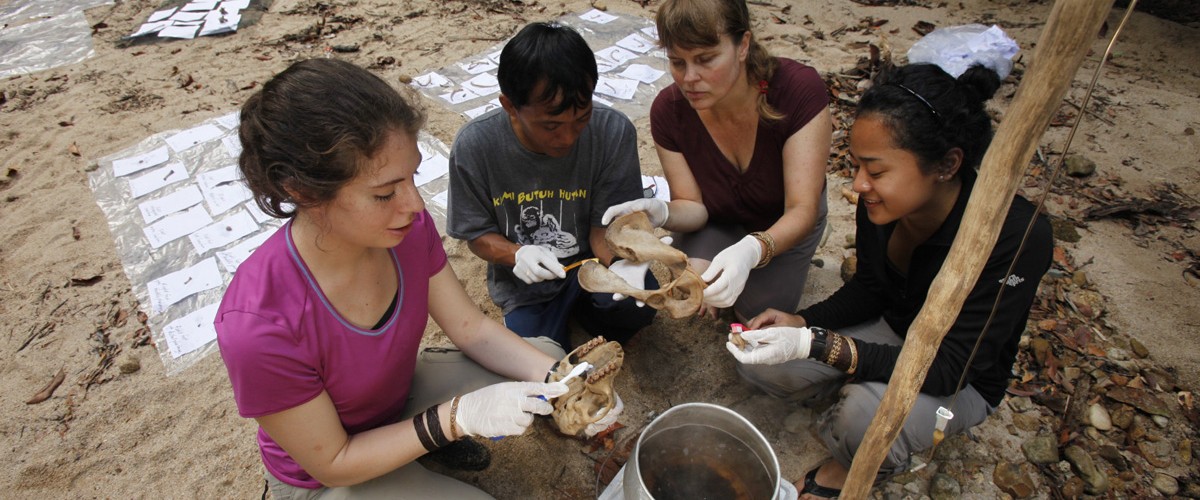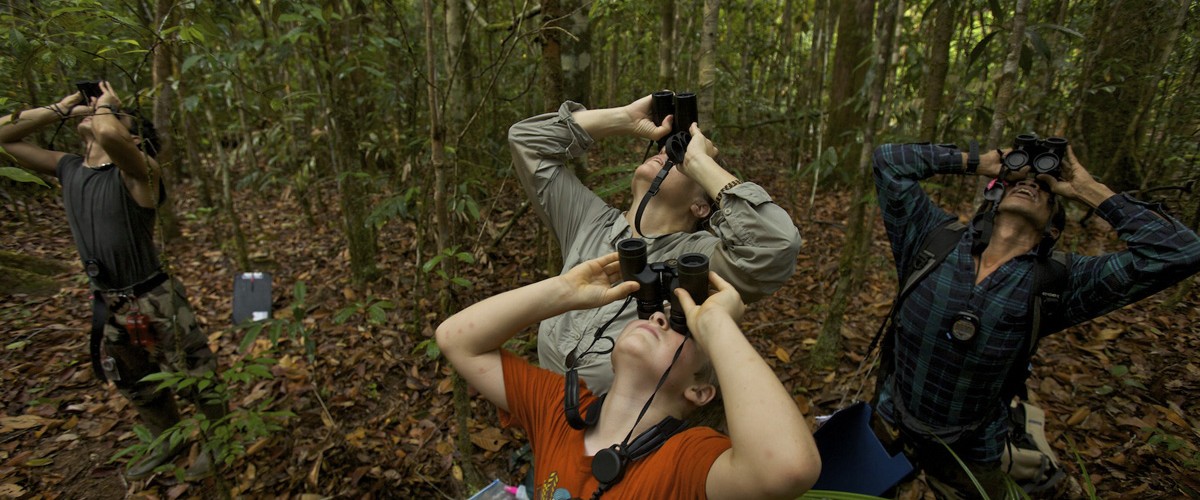By Brodie Philp, GPOCP Research Manager
Allow me to introduce myself. I’m Brodie, a 27-year-old Wildlife Ecologist from Adelaide, Australia. I have recently begun the position of research manager for GPOP (Gunung Palung Orangutan Project) at Cabang Panti Research Station. This is not my first stint in Borneo, previously I volunteered with Orangutan Foundation International as a release intern where I spent my days rehabilitating orphaned, sick and injured orangutans for release back into the wild. After almost three years back home in Australia, working as an adventure tour guide, koala catcher and turtle monitoring team leader, among other things, the calling of orangutans and Borneo was too much to resist when I saw this position advertised.
After several months preparing visa applications and working on travel preparations, I arrived in Ketapang in West Borneo. Here I spent the first few weeks working in our office, getting to know the staff and all the different aspects of our organization and finalizing preparations for heading into the forest. Ketapang is a lovely little city, but I was itching to head to the forest.
I have been at the research site for a few weeks now and have started to establish my work routine. The forest is bursting with life, and a unique combination of skill and luck means that each day is an exciting one due to the potential for what we might see when out searching for or following orangutans.
 |
|
Brodie up before sunrise collecting orangutan fecal samples for analysis.
|
Camp is so beautiful. On the banks of the river that meanders past our main building I find myself getting distracted by the crystal clear running water, given that back home I come from the driest state on the driest continent. The morning light hits the forest canopy illuminating it in every shade of green possible and the light beams that make it through to the forest floor are defined by the moisture laden air. Forest surrounds all of camp so even on days spent in “the office” there is still the chance of seeing something truly remarkable. Hornbills plucking fruit from the tree tops, macaques having extended grooming sessions, flying lizards cruising past and gibbons giving their morning calls have all been visible from my desk window alone. But of course, there are some negative aspects of the job, such as plucking ticks off each other, finding leeches in all the wrong places, and battling an army of fire ants that migrates in and out of camp on a regular basis. But these are far outweighed by the potential unique experiences and sights each day brings.
 |
|
A rat snake found lurking in the trees discovered while searching for orangutans.
|
It’s easy to get constantly distracted by the beauty of Gunung Palung National Park, but there is work that needs to be done as well. Days spent following orangutans usually begin at 3:30 am to enable us to get to their nest before they wake up. And days finally end for me at around 11 pm after I have charged all the equipment up, and made sure everything is ready to use again the next day. Staff and volunteers are always coming and going from camp and it’s my job to make sure they are up-to-date with all of our research methods and procedures. I have already held a training session with the staff to go over proper field methods and establish an understanding of everyone’s roles and responsibilities for success of the project. I am hoping this can establish a good platform of understanding and open communication. Running a research station in a remote location also requires a great deal of planning and organizing of logistics to keep our equipment stocked and functioning, the facilities maintained and everybody fed and happy. The trek in and out of camp is 18 km so we can’t head home after a day’s work, therefore this role combines the need to manage research but also develop an understanding of personalities and an appropriate life and work balance as we live together 24/7.
 |
|
Toto, Brodie, Sy and Dang trying to stay dry during a rain shower while searching for orangutans.
|
In terms of research, this year will have a heavy focus on mother and young pairs or “Ibu anaks” as they are referred to in Indonesian. In particular we are looking at comparisons of food intake and taking fecal samples to compare digestion rates, particle size and seed dispersal. During my first few weeks, we have managed to find a few pairs already. Given my previous work involved rehabilitating orangutans that were orphaned, it is amazing to gain further insight into the complex relationship a young orangutan has with his or her mother. The vast knowledge a mother shares with her young includes not only where to find fruit, but when to eat it, what part to eat, and how to eat it. Some fruits are best eaten ripe, others are best eaten when they are young so that the seeds within are still soft. I have never extensively studied botany, but have already learned quite a bit about the vast fruit types present in the forest. It is also fascinating to learn about how so many animals rely on these fruits and how the fruits rely on the animals for seed dispersal and pollination. Often fruits in the canopy are completely out of sight, but there are enormous feeding opportunities available in the forest if one knows where to look…and that’s what mom is for.
 |
|
Baby orangutan, Ronnie, is starting to gain confidence and learn the ways of the forest with the help of his mom (not in picture). Photo credits @ Brodie Philp.
|
My initial introduction to the role has been a hectic one. There is a lot to learn and understand, and there are infinite opportunities for me to expand my knowledge and implement past experiences to try and make this project the best it can be. There will be frustrations and struggles along the way but as I sit looking out from that same desk window I am enthusiastic about what lies ahead.









